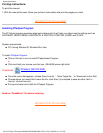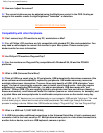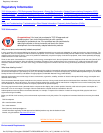
Q: How does a TFT LCD Panel work?
A: On each column and row of the TFT LCD panel, a data source drive and a gate drive and attached
respectively. The TFT drain of each cell is connected to the electrode. The molecular arrangement of
liquid crystal elements differs depending on whether it is impressed with voltage or not. It varies the
direction of polarized light and the amount of light by letting it through different arrays of liquid
crystal elements. When two polarized filters are arranged vertically on a polarized light pole, the
light that passes through the upper polarized panel is turned 90 degrees along with spiral structure
of the liquid crystal molecules, and goes through the polarized filter at the bottom. When impressed
with voltage, liquid crystal molecules are arranged vertically from the original spiral structure and
the direction of the light is not turned in 90 degrees. In this case, light that comes through the top
polarized panel may not go through the polarized panel at the bottom.
Q: What are the advantages of TFT LCD compared to CRT?
A: In a CRT monitor, a gun shoots electrons and general light by colliding polarized electrons on
fluorescent glass. Therefore, CRT monitors basically operate with analog RGB signal. A TFT LCD
monitor is a device displaying an input image by operating liquid crystal panel. The TFT has a
fundamentally different structure than a CRT: Each cell has an active matrix structure and
independent active elements. A TFT LCD has two glass panels and the space between them is filled
in with liquid crystal. When each cell is connected with electrodes and impressed with voltage,
molecular structure of liquid crystal is altered and controls amount of inlet lighting to display
images. A TFT LCD has several advantages over a CRT, since it can be very thin and it does not
have flickering because it does not use scanning method.
Q: Vertical frequency of 60Hz optimal for an LCD monitor, why?
A: Unlike a CDT monitor, the TFT LCD panel has a fixed resolution. For example, an XGA monitor
has 1024x3 (R, G, B) x 768 pixels and higher resolution may not be available without additional
software processing. The panel is designed to optimize display for 65MHz dot clock, one of the
standards for XGA displays. Since the vertical/horizontal frequency for this dot clock is 60/48Hz, the
optimum frequency for this monitor is 60Hz.
Q: What kind of wide-angle technology is available? How does it work?
A: The TFT LCD panel is an element controls/displays inlet of a backlight using the dual-refraction
of liquid crystal. Using the property that the projection of inlet light refracts toward the major axis of
the liquid element, it controls the direction of inlet light and displays it. Since the refraction ratio of
inlet light on liquid crystal varies with the inlet angle of the light, the viewing angle of a TFT is much
narrow than that of a CDT. Usually, viewing angle refers to the point where the contrast ration is 10.
Many ways to widen the viewing angle are currently being developed the most commonly used
approach is to use a wide viewing angle film, which widens viewing angle by varying the refraction
ratio. Also IPS (In Plane Switching) or MVA (Multi Vertical Aligned) is used for wider viewing angle.
FAQs (Frequently Asked Questions)
file:///D|/Philips LCD/english/170B/SAFETY/SAF_FAQ.HTM (7 of 9) [1/20/2001 3:17:25 PM]


















